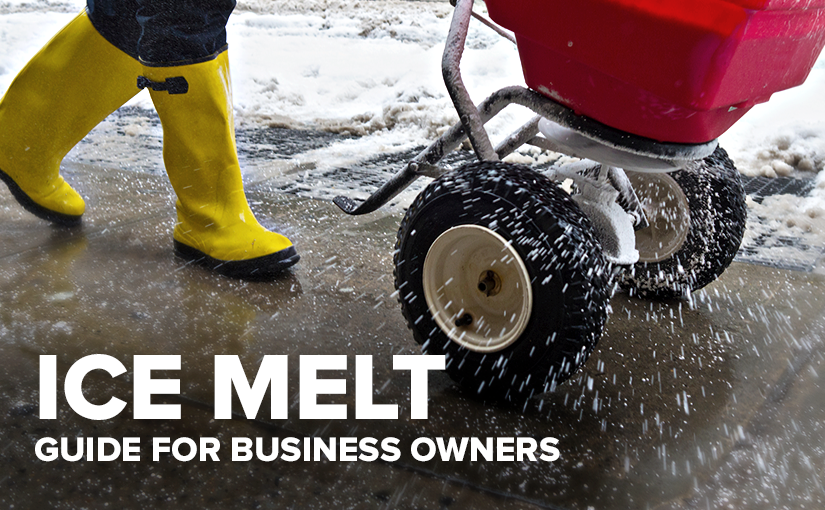To the average business owner, ice melt is ice melt—you spread it on your sidewalks and parking lots, helping to ensure that the walkways surrounding your business are free of ice (and slip) hazards. What many don’t realize is that there is a wide variety of ice melt types, each with different properties. Some are safe for animals, others are not; some work in super cold temperatures, and others don’t. While there are a number of different ice melt products available, they all work in a similar way—by lowering the freezing point of water and turning snow and ice into saltwater slush.
Here at U.S. Standard Products, we’ve put together a quick ice melt guide to help you select the best ice melt formula for your business needs.
Exploring Ice Melt Materials
| Type | Temp. | Pros | Cons |
| Sodium Chloride (Rock Salt) | 20-22o F
|
Most common
Inexpensive Natural Fast acting |
Not effective in extreme cold
Corrosive—(damages metal, grass, sometimes concrete) Deadly to animals when ingested Leaves residue |
| Calcium Chloride | -25o F
|
Most effective in extreme cold
Natural Fast acting A little goes a long way Long lasting |
More costly
Can damage vegetation Possible health consequences |
| Potassium Chloride | 12-25o F
|
Natural
Less corrosive Better for environment |
Not effective in extreme cold
Leaves residue Harmful to vegetation at high concentration More costly Deadly to animals with kidney disease when ingested |
| Urea | 15o F | Very little damage to concrete/asphalt
Better for environment Safer for animals Inexpensive |
Harmful to vegetation at high concentration
Not as effective |
| Magnesium Chloride | -13-5o F
|
Fast acting
Long lasting Natural Better for environment |
More costly
Can damage vegetation Deadly to animals with kidney disease when ingested Moderate concrete damage |
Don’t Forget!
As you’re considering ice melt options, don’t forget these important safety and usage tips.
- Always use in moderation. Using more than the recommended amount does not increase effectiveness—in fact it could cause damage to your concrete/asphalt, as well as any nearby vegetation.
- Wear gloves. First, it’s probably cold out—dress for the weather! Second, and probably more important, the chemicals contained in most ice melt products can irritate the skin. It’s not worth taking a chance.
- Keep shoveling. As nice as it would be to put the snow plows, blowers, and shovels back in the garage, you still have to put in the work to remove whatever snow you can in order for the ice melt to be effective.
- Seal it up. Ice melt absorbs moisture, so when it’s in storage, make sure it’s sealed up properly to maintain effectiveness.
- Avoid fresh concrete. If you’ve had concrete poured on your property within the last year, keep the ice melt away! Freshly poured concrete needs time to cure, and application of ice melt can set it up for future damage.
U.S. Standard Products is an industrial supplies distributor based in New Jersey, providing operational and safety necessities ranging from ice melt to work gloves, and so much more. To learn more about our product offering, follow U.S. Standard Products on social media:

